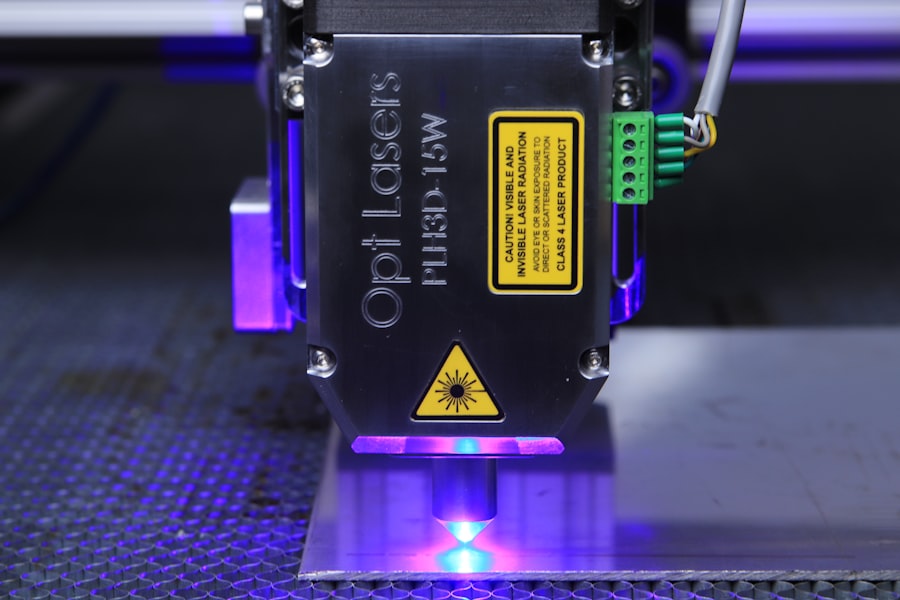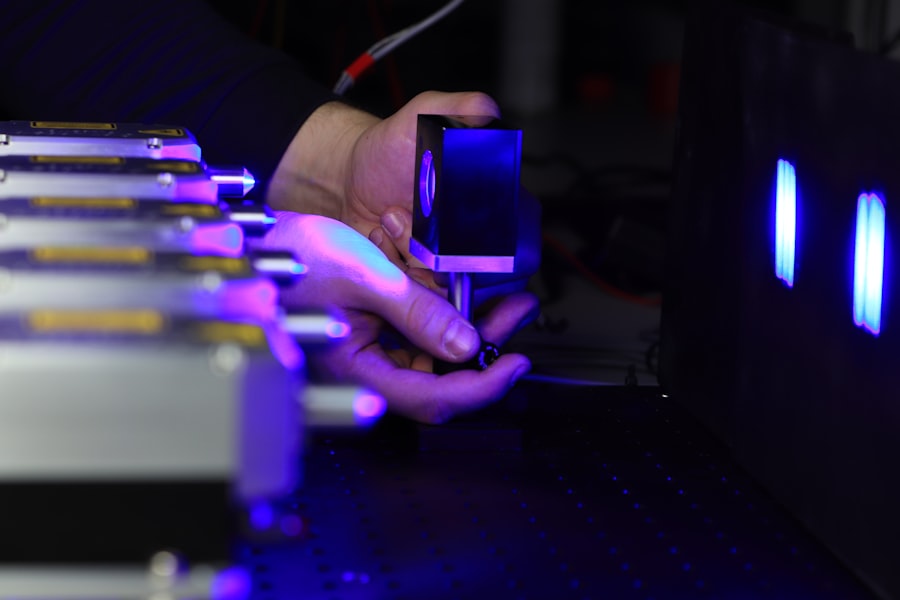When you first consider laser hair removal, it’s essential to grasp how the process works. At its core, laser hair removal utilizes concentrated beams of light to target and destroy hair follicles. The pigment in the hair absorbs this light, which then converts to heat, effectively damaging the follicle and inhibiting future hair growth.
This method is not only efficient but also offers a long-term solution for those tired of traditional hair removal methods like shaving or waxing. As you embark on this journey, understanding the technology behind it can help you appreciate its effectiveness and safety. The procedure typically begins with a consultation where a trained professional assesses your skin type and hair color.
This assessment is crucial because the effectiveness of laser hair removal can vary based on these factors. For instance, individuals with light skin and dark hair often see the best results due to the contrast that allows the laser to target the hair more effectively. During the actual session, you may experience a sensation similar to a rubber band snapping against your skin, but most find it tolerable.
After a few sessions, you’ll likely notice a significant reduction in hair growth, making the initial discomfort worth it.
Key Takeaways
- Laser hair removal targets hair follicles with concentrated light energy to inhibit future hair growth
- Allowing enough time between laser sessions is crucial to ensure the effectiveness of the treatment
- Factors such as skin type, hair color, and medical history should be considered before scheduling laser sessions
- Having laser sessions every 2 weeks can increase the risk of skin irritation, burns, and pigment changes
- Alternatives like waxing, threading, and depilatory creams can be considered for more frequent hair removal needs
- Proper skin care between laser sessions includes avoiding sun exposure and using gentle skincare products
- Consulting with a professional is important to assess individual needs and create a personalized treatment plan
- It’s important to weigh the benefits and risks of frequent laser sessions and consider alternative hair removal methods
The Importance of Time Between Laser Sessions
Optimizing Treatment Effectiveness
Scheduling sessions too close together can lead to less effective treatment, as many hairs may not be in the anagen phase. Professionals typically recommend spacing sessions four to six weeks apart, allowing a greater number of hairs to enter the anagen phase and maximizing treatment effectiveness.
Avoiding Frustration and Disappointment
Rushing into sessions every two weeks can lead to disappointing results, which can be frustrating. Understanding the importance of timing is crucial for setting realistic expectations and getting the most out of your investment in laser hair removal.
Setting Realistic Expectations
By grasping the concept of the hair growth cycle and the optimal timing for laser hair removal, you can set realistic expectations and achieve the desired results. This knowledge will help you make the most of your investment and enjoy the benefits of smooth, hair-free skin.
Factors to Consider Before Scheduling Laser Sessions

Before you schedule your laser hair removal sessions, there are several factors to consider that can influence both the effectiveness and safety of the treatment. First and foremost, your skin type and hair color play a significant role in determining how well you will respond to laser treatments. Darker hair on lighter skin tends to yield the best results, while lighter hair colors may not respond as effectively due to lower pigment levels.
Additionally, your overall health and any medications you are taking should be discussed with your practitioner. Certain medications can increase sensitivity or affect how your skin reacts to laser treatment. It’s also important to consider any recent sun exposure or tanning products you may have used, as these can impact your skin’s sensitivity and increase the risk of adverse reactions.
Taking these factors into account will help ensure that you are well-prepared for your sessions and can achieve optimal results.
Potential Risks of Having Laser Sessions Every 2 Weeks
| Potential Risks of Having Laser Sessions Every 2 Weeks |
|---|
| 1. Skin Irritation |
| 2. Hyperpigmentation |
| 3. Hypopigmentation |
| 4. Burns or Blisters |
| 5. Scarring |
| 6. Infection |
While it may be tempting to schedule laser hair removal sessions every two weeks in hopes of speeding up results, this approach can lead to several potential risks. One significant concern is skin irritation. Frequent exposure to laser treatments can cause redness, swelling, and discomfort that may not have time to subside before your next session.
This irritation can lead to a cycle of discomfort that detracts from the overall experience. Moreover, undergoing treatments too frequently can increase the risk of burns or pigmentation changes in your skin. The laser’s heat can cause damage if it’s applied before your skin has fully recovered from the previous session.
This risk is particularly pronounced for individuals with sensitive skin or those who have recently tanned. By adhering to recommended intervals between sessions, you not only protect your skin but also enhance the overall effectiveness of the treatment.
Alternatives to Consider for More Frequent Hair Removal
If you find yourself needing more frequent hair removal than what laser treatments can provide, there are several alternatives worth considering. Traditional methods such as shaving or waxing can be effective for quick fixes between laser sessions. Shaving is particularly convenient as it can be done at home with minimal preparation, while waxing offers longer-lasting results than shaving but requires more time and effort.
Another option is using depilatory creams, which dissolve hair at the skin’s surface. These creams can be effective for those who prefer not to shave or wax but should be used with caution due to potential skin sensitivities. Additionally, some people explore electrolysis as an alternative method for permanent hair removal.
While it requires more time and commitment than laser treatments, electrolysis can be effective for all hair colors and types, making it a viable option for those who may not be ideal candidates for laser therapy.
How to Properly Care for Your Skin Between Laser Sessions

Proper skincare between your laser hair removal sessions is essential for maintaining healthy skin and optimizing results. After each session, your skin may be sensitive and require gentle care. It’s advisable to avoid harsh scrubs or exfoliants for at least a week following treatment to prevent irritation.
Instead, focus on hydrating your skin with soothing lotions or aloe vera gel to help calm any redness or discomfort. Sun protection is another critical aspect of post-treatment care. Your skin will be more susceptible to sun damage after laser sessions, so applying a broad-spectrum sunscreen with at least SPF 30 is vital whenever you go outdoors.
This protection helps prevent pigmentation changes and ensures that your skin remains healthy throughout the treatment process. Additionally, staying hydrated and maintaining a balanced diet can support your skin’s recovery and overall health.
Consulting with a Professional for Personalized Advice
Before embarking on your laser hair removal journey, consulting with a qualified professional is crucial for receiving personalized advice tailored to your unique needs. A licensed practitioner will assess your skin type, hair color, and medical history to determine the best approach for you. They can provide insights into what to expect during each session and help set realistic goals based on your individual circumstances.
Moreover, ongoing communication with your practitioner throughout the process is essential.
A professional will be able to adjust your treatment schedule or recommend alternative methods if necessary, ensuring that you achieve the best possible results while prioritizing your safety and comfort.
Final Thoughts on the Frequency of Laser Sessions
In conclusion, while it may be tempting to seek rapid results through frequent laser hair removal sessions every two weeks, understanding the science behind hair growth cycles and the importance of proper timing is crucial for achieving optimal outcomes. By adhering to recommended intervals between treatments, you not only enhance the effectiveness of each session but also protect your skin from potential risks associated with over-treatment. As you navigate this journey toward smoother skin, remember that patience is key.
Embrace the process and allow your body the time it needs to respond effectively to each treatment.
If you are considering doing a laser session every 2 weeks, you may want to check out the article on



